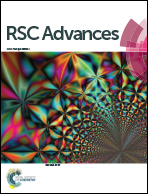Photo-assisted inkjet printing of antibodies onto cellulose for the eco2-friendly preparation of immunoassay membranes
Abstract
The current global issues have stimulated the search for both ecologically and economically friendly (eco2-friendly) materials and processes. As an affordable biopolymer, cellulose is an ideal material for developing diagnostic devices. Recently, paper-based bioanalytical devices have trended towards three-dimensional microfluidic platforms allowing multiplex diagnosis. This technological development now challenges the production process of those devices. In this perspective, the biomolecule immobilization process presented here combines an inkjet printing dispensing method with a photolinker-free photografting procedure. While many printing cycles are usually achieved to get efficient immune answers, only one to five printing passes were sufficient in this study, thereby enabling to save bio-inks. Antibodies have been successfully printed and immobilized onto paper sheets. These membranes were further used to perform lateral flow immunoassays. The visual detection limits observed were identical to those usually displayed by the classical dispensing method, regardless of the membrane material. Thus, the process developed herein is simple, time and cost-saving as well as environmentally friendly. More generally, it is a powerful tool for robust and abundant immobilization of chemical-sensitive proteins onto various cellulose-based papers and according to complex designs.


 Please wait while we load your content...
Please wait while we load your content...